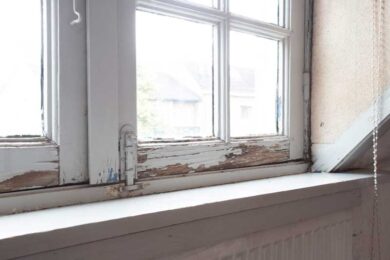Comprehensive Overview on Effective Lead Infraction Elimination Techniques
In the realm of ecological security, dealing with lead infractions requires a meticulous and structured approach. This comprehensive overview begins by highlighting the essential initial actions of identifying lead hazards via sophisticated assessment and screening approaches. The overview clarifies on the value of adhering to strict safety and security protocols throughout the removal process, consisting of the use of appropriate PPE and isolating influenced areas.
Determining Lead Risks
Identifying lead threats is a vital initial action in reducing the risks associated with lead exposure. Lead, a harmful steel, can be existing in various ecological mediums, including paint, soil, water, and dirt.
The first phase in identifying lead dangers entails recognizing common lead resources within the constructed atmosphere. Structures developed prior to 1978 are especially vulnerable as a result of the widespread use lead-based paint during that duration. Additionally, soil contamination can happen from weakening outside paint, commercial discharges, or historic usage of leaded fuel.
An additional significant source is lead piping and pipes components, which can leach introduce drinking water. Durable goods such as toys, ceramics, and imported products may additionally include hazardous lead degrees. Notably, work settings and hobbies including lead can track contaminants into homes.
Assessment and Screening
When addressing lead risks, reliable analysis and testing are critical. This crucial step guarantees the recognition and quantification of lead presence, consequently directing subsequent removal initiatives. Initial assessment generally includes a visual examination to identify potential lead resources, such as weakening paint or polluted dust. This is complemented by more strenuous screening methodologies to ascertain the level of contamination.

Dust wipe sampling is another vital strategy, specifically in residential setups. By accumulating samples from floorings, windowsills, and various other surfaces, this technique gives understandings right into possible exposure dangers. Additionally, dirt testing around structure borders is necessary to discover lead contamination that can present threats, particularly to children.
Safe Elimination Procedures
Upon completing comprehensive evaluation and screening, carrying out secure removal procedures is the following critical stage in addressing lead hazards. This process ensures that lead-contaminated materials are effectively and safely eradicated, reducing risk to both workers and locals. The first action involves isolating the damaged location using plastic sheeting and correct sealing techniques to prevent the spread of lead dirt.
Employees need to put on proper individual protective tools (PPE), consisting of respirators, handwear covers, and disposable coveralls, to alleviate exposure. Employing specialized tools and wet approaches, such as wet fining sand or utilizing HEPA-filtered vacuums, reduces the diffusion of lead bits. It is Full Report essential to avoid dry fining sand or rough blasting, as these approaches can generate harmful lead dirt.
Garbage disposal is an additional essential part; all contaminated products must be securely landed and classified according to EPA and regional regulations. Furthermore, complete cleansing of the workspace with HEPA vacuum cleaners and damp wiping makes sure the elimination of recurring lead particles.
Post-Removal Confirmation

Verification of effective lead elimination, recognized as post-removal confirmation, is essential to guarantee the security and habitability of the remediated location. This assessment makes certain that all well-known resources of lead have actually been resolved and that no noticeable indicators of contamination continue to be.
Adhering to the aesthetic examination, ecological tasting is carried out. This includes gathering dust, soil, and sometimes water samples from the remediated area. Accredited research laboratories assess these examples to gauge lead degrees, ensuring they fall listed below the safety and security limits established by regulatory bodies such as the Epa (EPA)
Additionally, air quality screening might be done to discover airborne lead particles, specifically in situations where substantial lead-based paint removal or remodelling has actually taken place. The results of these tests give measurable information verifying that the lead levels are within permitted limitations.
Ultimately, post-removal confirmation functions as a vital checkpoint, validating the performance of the lead abatement initiatives and securing the health of owners and visitors.
Safety Nets and Maintenance

A vital safety net includes the usage of lead-safe accredited specialists for any type of remodelling, fixing, or paint activities. These specialists are learnt methods that lessen lead dust and debris. Furthermore, preserving coloured surface areas to stay clear of breaking or peeling is vital, Source as deteriorating paint try this website can release lead fragments right into the environment.
Educational initiatives targeting homeowner and lessees concerning the risks of lead and the relevance of reporting any prospective dangers can even more improve preventative initiatives. Routine cleaning utilizing HEPA vacuum cleaners and damp wiping techniques can considerably minimize lead dirt buildup.
Conclusion
In summary, effective lead offense removal necessitates a thorough method encompassing detailed evaluation, precise screening, and rigid removal treatments. Continuous inspections and upkeep are important to mitigate future lead threats, consequently safeguarding public health and wellness and ensuring continual compliance with governing requirements.